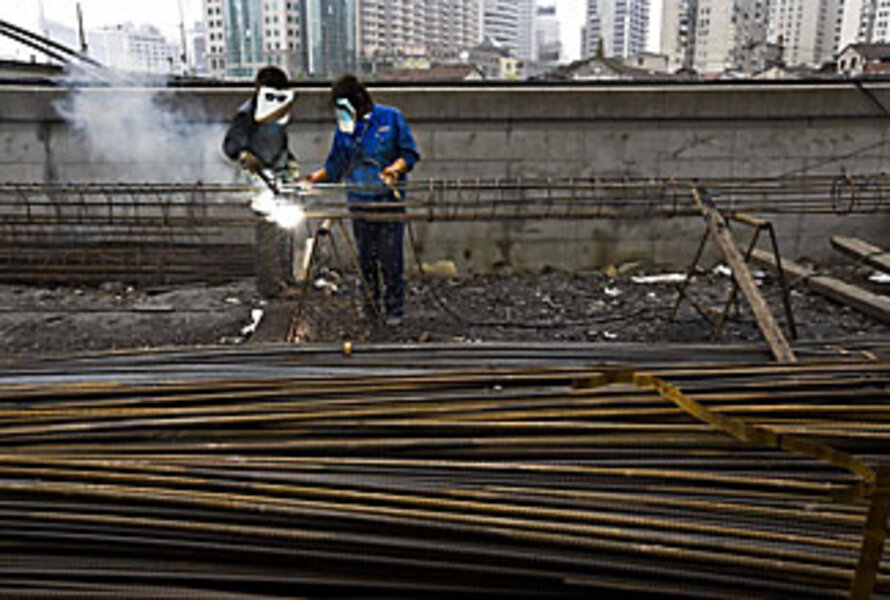China aims to end pessimism with $586 billion economic stimulus package
Loading...
| Beijing
The $586 billion economic stimulus package that China announced Sunday may not be quite as large as it seemed at first sight, but it dramatizes just how seriously the authorities in Beijing take the threat of a slowdown in the wake of the international financial crisis.
On the face of it, the package of tax cuts, higher public spending, and easier credit constitutes the largest such stimulus in history. Some of the money, though, had already been budgeted and some may even already have been spent, analysts say.
The announcement, however, "is a very clear demonstration of political intent to lean heavily into the wind of pessimism that has gripped China in recent weeks," says Daniel Rosen, an expert on the Chinese economy with the Rhodium Group in New York.
The new policy also gives President Hu Jintao something to show fellow world leaders at the Group of 20 summit in Washington Saturday as they seek ways out of the financial crisis.
"We must implement the measures to ensure fast and stable economic development," Premier Wen Jiabao told government leaders on Monday, according to state TV. "They are not only the needs of our own development but also our biggest contribution to the world."
Stock markets initially jumped on news of the package, in the hope that if China's economy continues to grow, it might help other nations weather the expected global recession by offering a market for their exports.
The stimulus package is designed to offset the effects of falling exports and a property slump on China's own economy, by boosting investment and consumption at home. That, the government says, should keep the world's fastest-growing economy on a "steady and relatively fast" growth track despite the gloomy international climate.
The State Council, China's cabinet, said it would target spending over the next two years on low-income housing, rural infrastructure, water and electricity supplies, technological innovation, and recovery from disasters such as the May 12 earthquake in Sichuan Province.
If the plan is implemented, its focus on projects benefiting China's poorer citizens, rather than on traditional large-scale industrial development, would reinforce the government's policy of building a "harmonious society" that bridges the current gap between rich and poor.
In that sense, the State Council said, the crisis offers "a new opportunity" to speed industrial restructuring. "The short-term goal is to ensure that growth continues. The longer-term aim is to rebalance the economy and redress inequalities," explains Arthur Kroeber, who heads Dragonomics, a Beijing-based economic analysis firm.
With few details available about how the government will disburse the money, or where exactly it will come from, the package's main purpose now is "psychological management," says Mr. Kroeber. "In the consumer sector ... people are not spending much," he says. "They are uncertain about the future so they are locking up their wallets."
Though much of the money in the package may have already been planned, says Mr. Rosen, Sunday's announcement "is important economically ... because it moves government spending and government-directed investment up the timetable dramatically. They are going to put it out as fast as possible."





